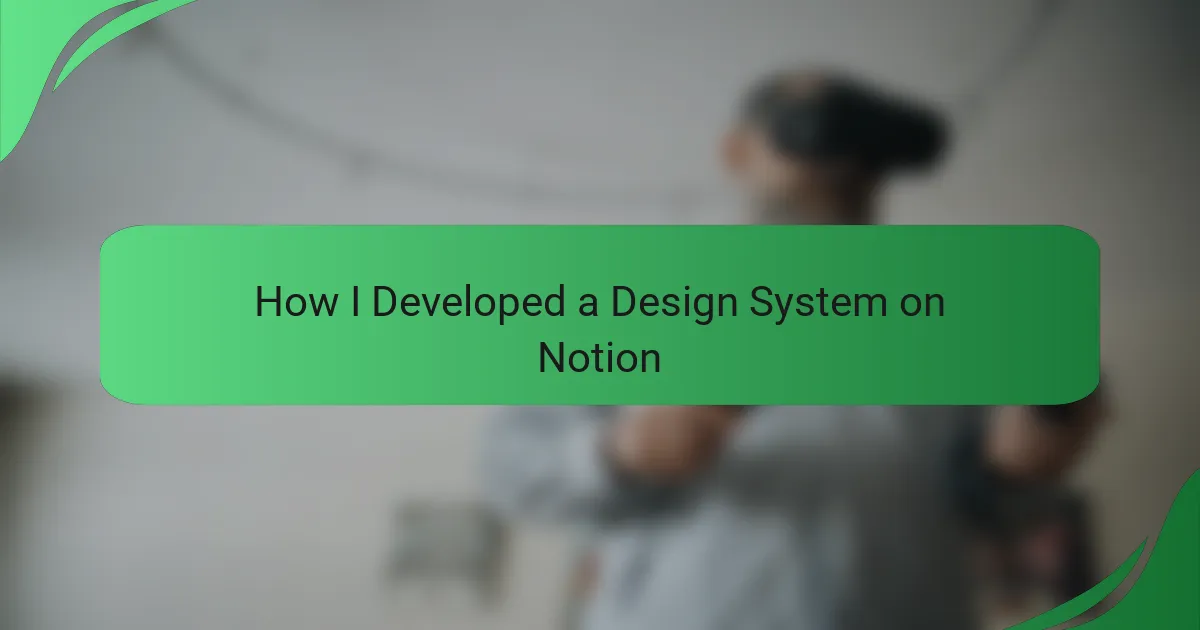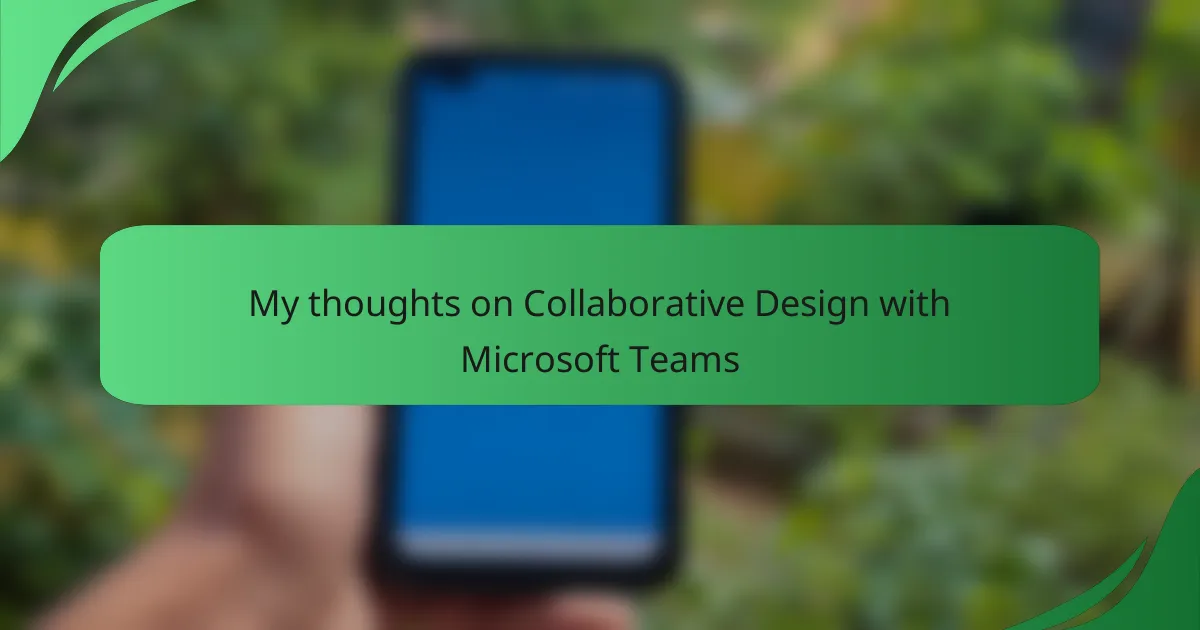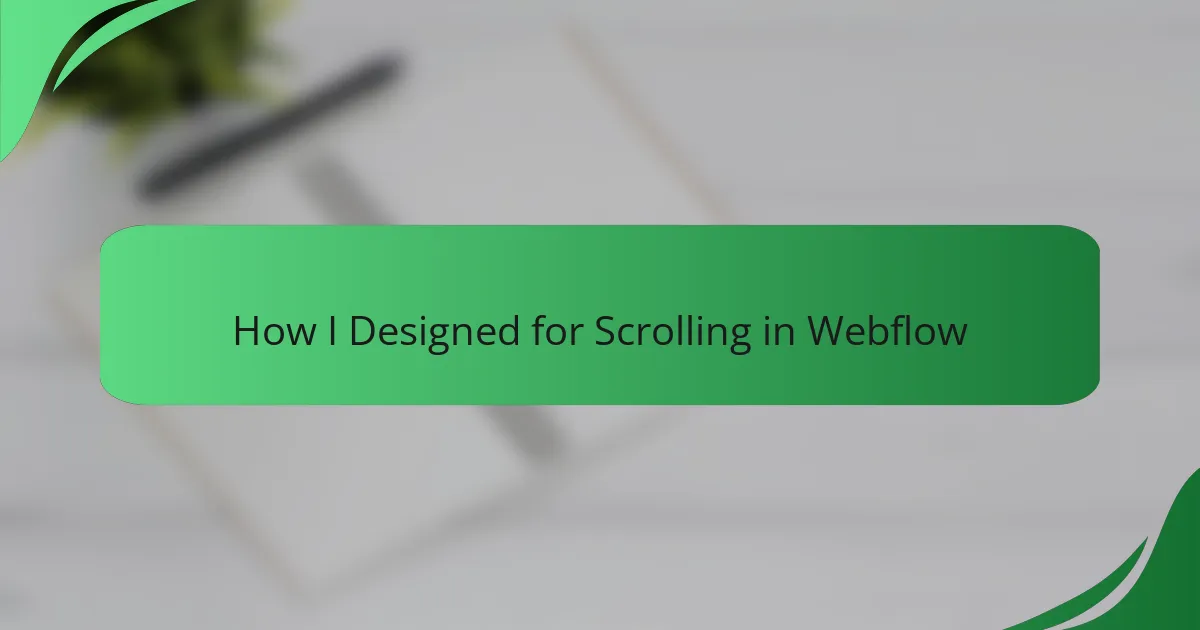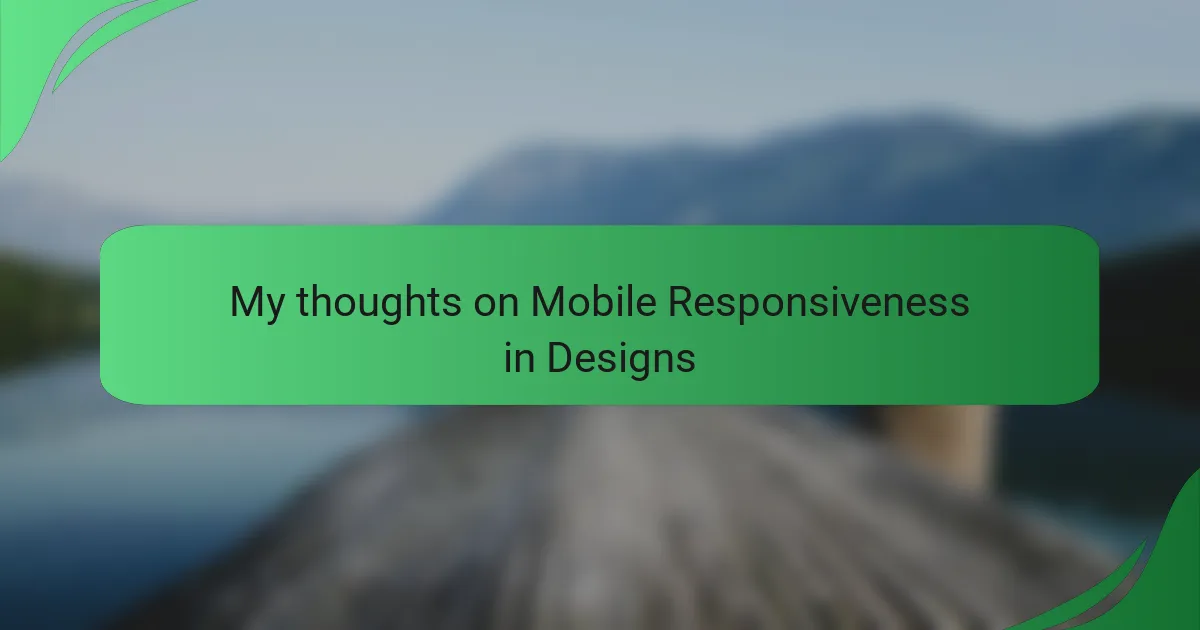Key takeaways
- Interface interaction design focuses on creating intuitive user experiences through effective iconography, enhancing user engagement and satisfaction.
- Clarity, consistency, and scalability are essential principles for effective icon design, ensuring that icons are recognizable and cohesive across interfaces.
- Utilizing tools like Adobe Illustrator and Noun Project can significantly improve icon creation, as they offer precision and a wealth of inspiration.
- Integrating icons contextually and considering accessibility enhances usability, contributing to a more inclusive and satisfying user experience.
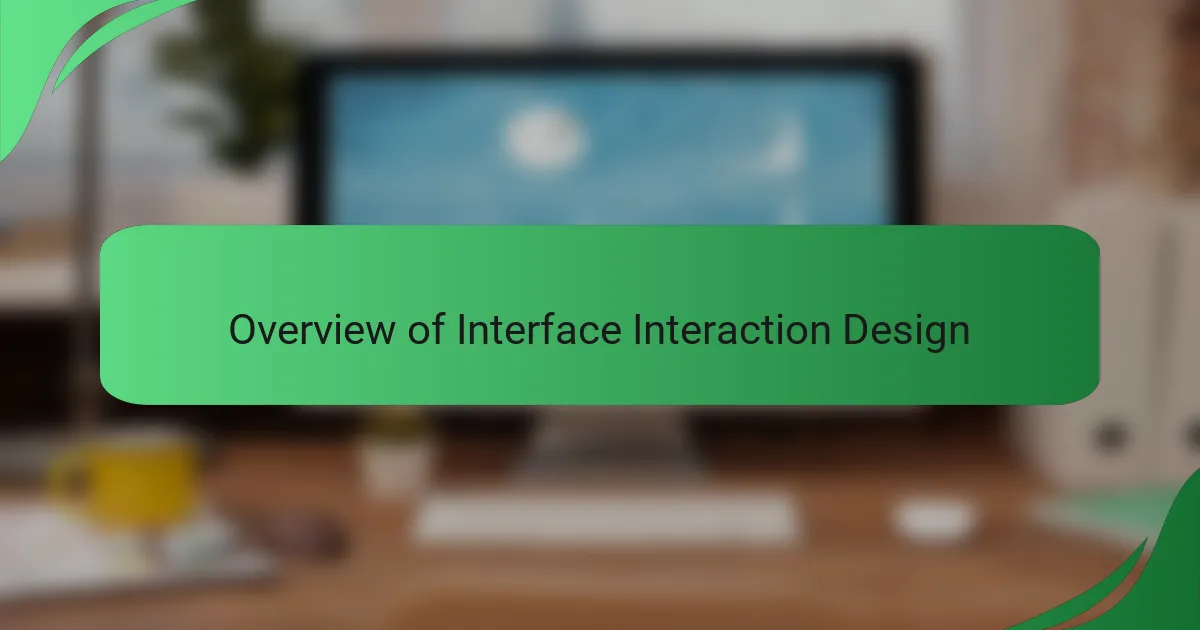
Overview of Interface Interaction Design
Interface interaction design is all about creating intuitive pathways between the user and the digital product. From my experience, it’s fascinating to witness how effective design can enhance user engagement and satisfaction. Understanding user needs and behaviors is crucial; it allows designers to craft interactions that feel natural and seamless. I often find that a well-designed interface can evoke emotions, making the user feel not just functional but also connected to the product.
In working with design tools like the Noun Project for crafting icons, I realized how critical those small elements are in building a coherent user experience. Icons aren’t just visual flourishes; they have the power to communicate messages quickly and effectively. They become the visual language that bridges verbal communication gaps in user interfaces.
| Aspect | Interface Interaction Design |
|---|---|
| Focus | User Experience |
| Components | Icons, Buttons, Menus |
| Goal | Ease of Use |
![]()
Importance of Iconography in Design
Iconography plays a crucial role in design, acting as a visual language that conveys concepts quickly and effectively. In my experience, well-crafted icons can enhance usability by guiding users through an interface effortlessly. For instance, I once received feedback from a client who remarked how a clean set of icons transformed their app’s navigation, making it far more intuitive for their users.
During my journey of exploring the Noun Project, I discovered that the right icons can evoke emotions and strengthen brand identity. Each icon serves not just as a design element but as a storytelling device that connects users to the intended message. Reflecting on how a simple image can spark recognition or elicit a response has truly reshaped my understanding of visual design.
Here’s a comparison of the impact of effective iconography versus poorly designed icons:
| Aspect | Effective Iconography | Poorly Designed Icons |
|---|---|---|
| User Recognition | High – Symbols are instantly understood | Low – Confusion and misinterpretation |
| Emotional Impact | Positive – Enhances user experience | Negative – Frustration and disengagement |
| Brand Representation | Consistent – Reinforces visual identity | Inconsistent – Dilutes brand message |
![]()
Principles of Effective Icon Design
When designing icons, clarity is paramount. From my experience, users should instantly understand the purpose of an icon without confusion. For instance, I recall crafting a simple trash can icon; it needed to evoke the action of deleting, which is why I opted for a universally recognized design.
Another important principle is consistency. All icons within a project should share a similar style and color palette. This doesn’t just unify the look, it also enhances user familiarity. I remember how I subtly adjusted the thickness of lines in my icons to match, which made a significant impact on the overall design harmony.
Lastly, scalability is crucial; icons must remain recognizable at various sizes. I’ve designed icons that looked stunning at larger resolutions, but when shrunk, they lost detail. This taught me to prioritize simplicity while ensuring they still conveyed their message effectively.
| Principle | Description |
|---|---|
| Clarity | Icons should be easily understandable at first glance. |
| Consistency | Maintain a uniform style and color scheme across all icons. |
| Scalability | Icons must be recognizable and effective at any size. |
![]()
Tools for Crafting Icons
Crafting icons requires the right tools to bring your vision to life. I’ve found that using vector graphic software, like Adobe Illustrator, allows for precise control over shapes and lines. When I first started designing icons, I was amazed at how these tools transformed my simple sketches into polished digital art.
As I became more comfortable with the design process, I also experimented with various online resources that stimulate creativity and functionality. For instance, Noun Project has been invaluable in providing inspiration and a vast library of premade icons, which I often adapt to fit my unique style. The ability to remix existing designs taught me how to think critically about iconography and its integration into user interfaces.
Here are some essential tools I recommend for crafting icons:
- Adobe Illustrator: Industry-standard vector graphics software for creating clean, scalable icons.
- Sketch: A popular tool among UI/UX designers, particularly for its intuitive interface and usability.
- Figma: A versatile design tool that allows for team collaboration in real-time, making it great for feedback.
- Noun Project: A treasure trove of icons that can serve as inspiration or a base for your designs.
- Canva: A user-friendly platform that’s perfect for quick designs and mockups, especially for beginners.

My Experience with Noun Project
My journey with the Noun Project has been nothing short of enlightening. When I first discovered it, I was impressed by the sheer variety of icons available. I remember swimming through an ocean of designs, feeling that rush of inspiration as I stumbled upon a perfect icon that fit my project. It’s those moments that really stick with you, don’t you think? The right icon can spark creativity and elevate a whole design.
One experience that stands out is when I was working on a mobile app with a client. They emphasized how important it was for their users to navigate intuitively. I dug into the Noun Project and found a set of icons that complemented my interface beautifully. Seeing the eyes of my client light up during the presentation confirmed what I already felt: icons are not mere embellishments; they have the power to transform user experience.
I’ve learned that the key to effectively utilizing resources like the Noun Project lies in personalization. I often take a base icon that resonates with my vision and tweak it, creating something unique while still benefiting from the design’s strength. This creative remixing process has not only improved my skills but also made the final designs more aligned with my client’s brand identity, reinforcing my belief in the fusion of existing ideas with fresh perspectives.
![]()
Techniques for Designing Custom Icons
When designing custom icons, I find that simplicity is key. I often start with basic shapes and gradually add details that embody the concept I want to convey. This allows the icon to remain recognizable even at smaller sizes, which is crucial for user interface design. Another technique I love is using a limited color palette; it helps maintain a cohesive look and enhances the icon’s visual appeal.
In my experience, sketching ideas on paper can be incredibly freeing. It allows for quick iterations without the constraints of software. This initial brainstorming phase often leads to more creative solutions. Once I finalize a design, I use tools like Illustrator to digitize my sketches, ensuring precision and scalability.
Finally, feedback plays a significant role in refining my designs. I frequently share my icons with peers and use their insights to make adjustments. This collaboration not only improves the final product but also enhances my skills as a designer.
| Technique | Description |
|---|---|
| Simplicity | Use basic shapes for clarity and recognizability. |
| Limited Color Palette | Enhances cohesion and visual appeal. |
| Sketching | Encourages creative thinking before digitization. |
| Feedback | Refines designs through collaboration and insights. |
![]()
Tips for Icon Integration in Interfaces
When it comes to integrating icons into interfaces, I’ve found that consistency is key. Using a cohesive style not only enhances the visual appeal but also improves usability. In my experience, users appreciate when icons share a similar look and feel, making navigation intuitive and seamless.
Another crucial tip is to ensure that icons are contextually relevant. I remember a project where we used a generic folder icon for a file upload feature. It didn’t convey the action clearly, leading to confusion. Once we switched to a more descriptive icon, users understood the function immediately, resulting in fewer support queries and a more satisfying experience.
Lastly, don’t forget about accessibility. I believe providing alternative text for each icon is essential for users with visual impairments. It’s something that adds value and reflects a thoughtful design approach. Incorporating these elements not only makes your design more inclusive but also enriches the user experience overall.
| Tip | Description |
|---|---|
| Consistency | Ensure all icons share a similar style for intuitive navigation. |
| Relevance | Choose icons that accurately represent their function to avoid confusion. |
| Accessibility | Provide alternative text for icons to support users with disabilities. |
